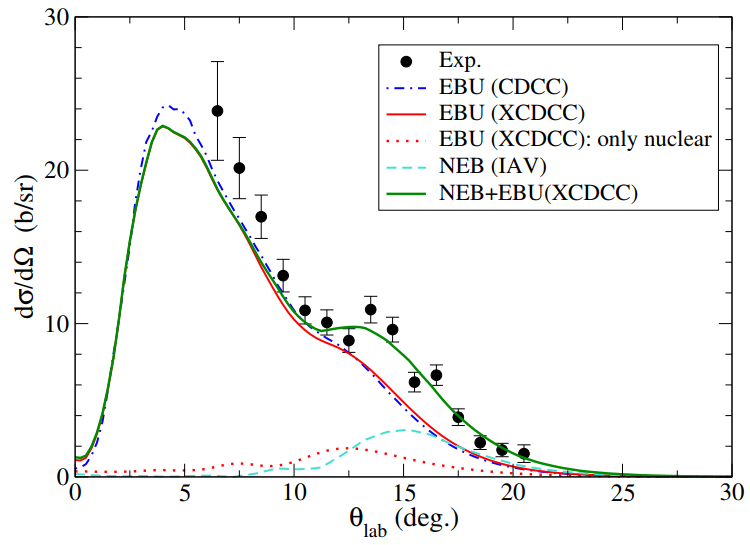Scientists reveal reaction mechanism of 11Be nucleus
Scientists from the Institute of Modern Physics (IMP) of the Chinese Academy of Sciences (CAS) and their collaborators have lately made new progress in the study of the reaction mechanism of 11Be nucleus. The study will help understand the effect of exotic structures such as the neutron halo on the reaction characteristics.
Elastic and breakup reactions induced by stable as well as unstable atomic nuclei constitute a fruitful area of research in nuclear physics. The angular distributions of elastic scattering cross sections can exhibit different features depending on the incident energy and the structure of the colliding nuclei.
11Be is an archetype of one-neutron halo nucleus, whose valence neutron has a low binding energy. In previous studies, measurements of the elastic scattering of 11Be have been made at energies around the Coulomb barrier on several medium to heavy targets.
For the first time, researchers at IMP and their collaborators have studied the elastic scattering and breakup reactions of 11Be on 208Pb at an incident energy of 140 MeV, which corresponds to about 3.5 times of the Coulomb barrier (VB≈39.5 MeV). The experiment was conducted at the Radioactive Ion Beam Line in Lanzhou, the Heavy Ion Research Facility of Lanzhou (HIRFL-RIBLL).
A strong suppression of the Coulomb nuclear interference peak is observed in the measured quasielastic scattering angular distribution. It is the first time that researchers have demonstrated the persistence of the strong breakup coupling effect for reaction systems involving neutron-halo nuclei at this relatively high incident energy. By calculations, researchers predict that the effect of the core excitation of the reaction system can be ignored.
Moreover, the angular and energy distributions of the 10Be fragments have been measured for the first time. These calculations revealed that the fragments are mostly produced by an elastic breakup (EBU) mechanism. However, the contribution of nonelastic breakup (NEB) is also found in the data. The results also reveal that these fragments experience a post-acceleration effect after the breakup takes place.
This work is supported by the Ministry of Science and Technology of China under the National Key R&D Programs, the National Natural Science Foundation of China, and the Youth Innovation Promotion Association of CAS.
The study was published in Physical Letters B.
Link to the paper:https://doi.org/10.1016/j.physletb.2020.135942.

Fig. 1 The experimental data of the quasielastic scattering of 11Be+208Pb and results of CDCC (blue-solid line) and XCDCC (black-dashed line) calculations. (Image by Duan Fangfang)

Fig. 2 Experimental differential breakup cross section for 11Be+208Pb system at Elab=140 MeV compared with the CDCC and XCDCC calculations. (Image by Duan Fangfang)


 甘公网安备 62010202000713号
甘公网安备 62010202000713号


